If I was to ask you ‘what color do you think of when you think of electricity?’, there’s a good chance that over 90% of you would say the same thing.
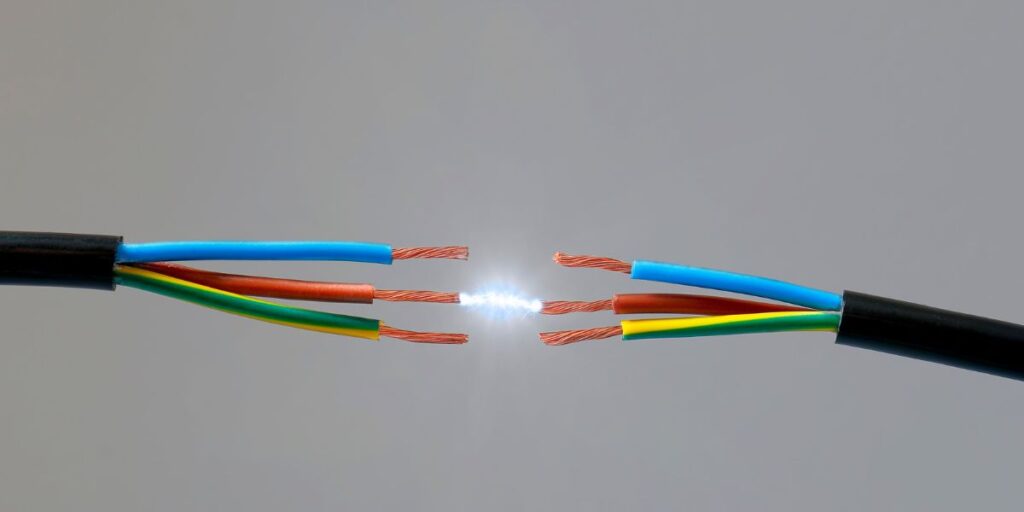
And yet, is that really the color of electricity? Does electricity have a color? When you think about it, you probably aren’t sure.
Movies and TV shows certainly don’t help, especially all those with electrically-powered superheroes shooting lightning out of their hands.
So let’s take a look and explore the actual color of electricity.
What color represents electricity?
There are a lot of different colors that represent electricity, but most people associate it with the color blue. One of the most common colors that we ever perceive electricity to be is blue, because of the way it interacts with the electrons in the air.
However, there are other colors that have represented electricity. Often white is used when showing lightning because it looks more vibrant against a black or darkened sky, and we associate the color white with a flash.
Yellow is another popular color that’s been perpetuated in some media, particularly in video games that involve different elements. Because fire is red and water or ice is blue, lightning and electricity are given the third primary color of yellow to help differentiate them.
Pikachu probably plays a part in this thinking as well – arguably the most famous electrical character in media. In fact, many electric Pokemon are yellow.
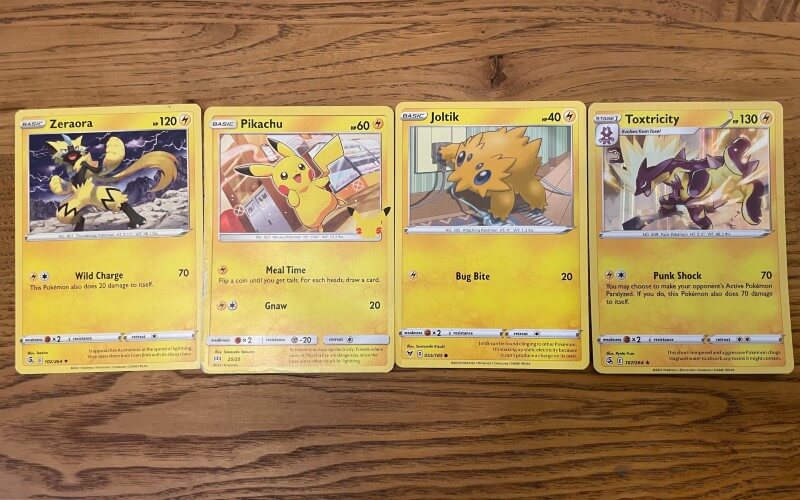
So, depending on the media you consume and what you’ve perceived yourself in real life, you may associate different colors with electricity. But blue is the color most associated with the charge because that’s the color electricity causes in the natural air.
What is the real color of electricity?
Electricity itself is colorless. You can’t see actual electricity, just the reaction of energy as electricity moves through an object. And it doesn’t always react – which is why electrified water is so dangerous.
To have a color, something needs to either create light or reflect it, and electricity does neither. It is a movement of charge, rather than an actual object. That charge can react with materials to create light – in lightbulbs, or as it passes violently and quickly through the air – but that’s not the actual electricity creating a color.
Why do electric sparks appear blue?
Sparks appear blue when enough voltage passes into the air. The electrical excitation of the molecules in the air creates a lot of ionized nitrogen ions, as nitrogen is the air’s primary element. The wavelength of the light emitted by charged nitrogen ions is blue, so sparks are blue.
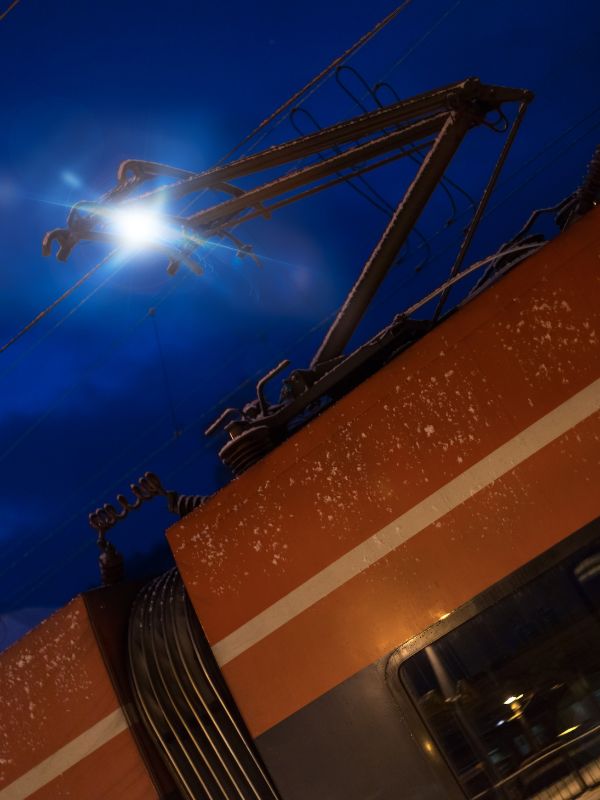
Again, you aren’t seeing the color of electricity. You’re seeing the color of the ions in the air that have been charged by the electricity (source).
It’s the same if you see any electrical arcs – the electricity is very suddenly jumping between contact points, and that surge of voltage is super-charging the ions in the nitrogen around it (source).
Why is static electricity blue?
Static electricity is not blue. Just like every other type of electricity, it is colorless because it is a moving charge, rather than a thing. It does cause a reaction in the air, and because nitrogen makes up the majority of the particles, that reaction can look blue-violet.
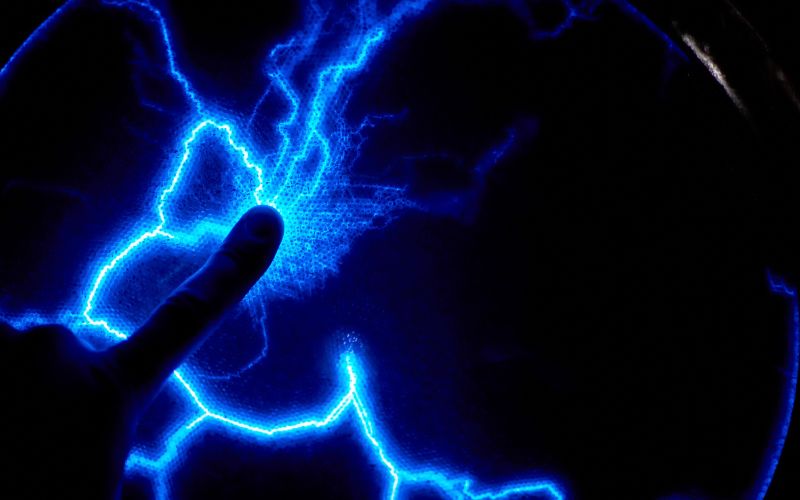
Normally we can’t see static electricity. We just get that painful jolt when we touch something after we’ve accidentally built up a charge. But sometimes when it is dark you may see a brief spark of color. This is the jump of the charge moving to ground itself.
And as it suddenly jumps, it ionizes the air which emits light, which looks blue or blueish-purple.
Is electricity really blue?
Electricity is not really blue. We perceive electricity as blue when it sparks or arcs between cables because it is exciting the nitrogen and oxygen in the surrounding air, causing the gas electrons to ionize.
Electricity is colorless, but it creates color in other objects by how it interacts with them.
Can electricity be any color?
Electricity can be a lot of different colors – it depends on the primary gas that surrounds the electricity when it suddenly escapes its usual point of travel. Common examples include neon signs – these are tubes filled with gasses that are being ionized by an electrical current.

Sparks, electrical arcs, and lightning are all the same theory as neon signs you see in bars or on buildings. It’s just electricity reacting with the gas particles – and the gas in question determines the color.
Here’s a quick rundown of some popular gasses and the colors they show when excited by electricity:
- Hydrogen – blue/violet
- Helium – pink/orange
- Neon – red
- Argon – violet
- Xenon – blue
- Oxygen – blue/violent
(source)
You could also make the argument that electricity creates color through lightbulbs, and modern smart bulbs can create up to 16 million different shades if they are RGB models. The charge passing through a semi-conductor on an LED can create light, and different diodes are combined to create every color you could think of.
In a regular non-smart bulb, light tends to be closer to either a yellow-white or a blue-white depending on the ‘temperature’ – that’s not the heat temperature, but a measurement of the wavelength of the light created, called Kelvins.
A lower number means the light is a more yellow-orange, while a higher number means a colder blue-white. But this isn’t the electricity you’re seeing, it’s the filament or the semiconductor (or, in CFL lights, the gas) reacting to current passing through.

Electric Wire Color Codes (USA)
Wires are color-coded so that it’s easier to tell them apart. Different wires within a cable have different jobs, and it could be hazardous to wire the wrong part of an electrical device to a wire.
There are three main parts of any wire:
- Live – this carries the live current from the power source, normally the circuit breaker
- Neutral – this wire closes the circuit – it’s the wire that travels in the reverse direction from the components back to the power supply
- Ground – this wire helps to ground the device, making the circuit safer.
Each wire has a standard color in the US:
- Live is black
- Neutral is white
- Ground is either green, green and yellow striped, or sometimes just bare copper
There are some cables that are used in situations where a stronger current is needed – normally commercial/manufacturing. These use 3-phase cables that have the same wires as above, but they have three live wires – black, red, and blue.
Sometimes electrical devices that you add to a circuit may also use a red wire to signify load. A common example is a light switch – you would connect the black wire on a light switch to the black live wire in the wall, and the red load switch to another black or red wire that travels to the light.
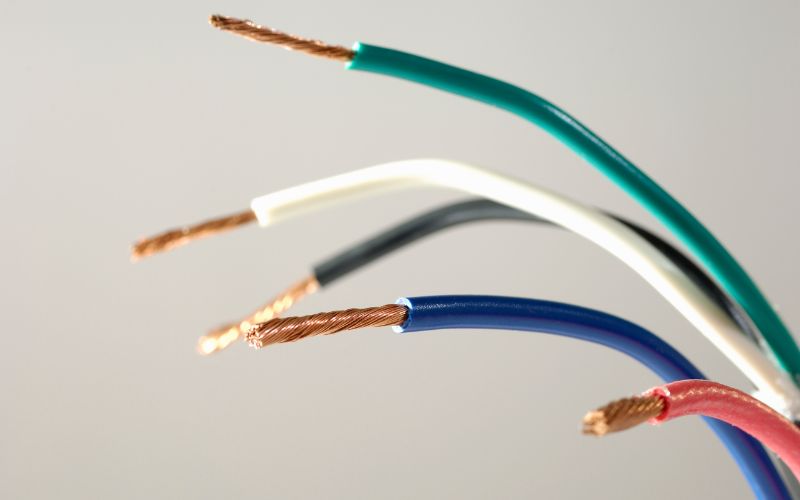
Electric Wire Color Codes Across The World
Unfortunately, the wire colors used around the world are not standard. It would make it so much easier if they were, but instead, there are differences all around the globe.
Here’s a guide to the different colors of wire you’ll find inside cables in your home, depending on where you live.
I’ve included the colors for a 3-phase and a single-phase cable, even though most homes will only use single-phase cable. It’s still interesting to note the differences between commercial-grade wiring as well.
| Phase Supply | Wire | US & Canada 120-240V | US & Canada 277 & 480 V | UK, EU & Russia (new) | China & Russia (old) | Australia & NZ | Japan | India, Pakistan & South Africa |
|---|---|---|---|---|---|---|---|---|
| 3 Phase | Line 1 | Black | Brown | Brown | Yellow | Red | Black | Red |
| Line 2 | Red | Orange | Black | Green | White | Red | Yellow | |
| Line 3 | Blue | Yellow | Gray | Red | Blue | White | Blue | |
| Neutral | White | Gray | Blue | Black | Black | White | Black | |
| 1 Phase | Line | Black | Red | Brown | Yellow | Red | Black | Red |
| Neutral | White | Gray | Blue | Black | Black | White | Black | |
| Ground/ Earth | Ground/ Earth | Green, Green & Yellow or Bare Copper | Green, Green & Yellow or Bare Copper | Green & Yellow | Green & Yellow | Green | Green | Green & Yellow |
There is no consistency at all – which can make it very confusing if you’re searching online for help with an electrical circuit. Websites from all around the world will tell you different things about which wire is which.
The Bottom Line
So to be absolutely clear, electricity doesn’t have a color. When traveling through the wires it is behaving normally, but if it finds the chance to have a clearer path to the ground, it will make the jump. And this surge causes the surrounding air to get excited, ionizing particles that emit light.
And it’s the wavelength of light emitted by those different particles that determine the color we see – and with the air made up primarily of oxygen and nitrogen, which both emit a blue-violet color, that’s the color we associate with electricity.
But you aren’t seeing the electricity, you’re seeing the reaction of the charge in the air.
